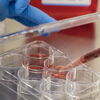Processing Your Payment
Please do not leave this page until complete. This can take a few moments.
- News
-
Editions
-
- Lists
-
Viewpoints
-
Our Events
-
Event Info
- Women's Leadership Forum 2025
- On the Road with Mainebiz in Bethel
- Health Care Forum 2025
- On The Road with Mainebiz in Greenville
- On The Road with Mainebiz in Waterville
- Small Business Forum 2025
- Outstanding Women in Business Reception 2025
- On The Road with Mainebiz in Bath
- 60 Ideas in 60 Minutes Portland 2025
- 40 Under 40 Awards Reception 2025
- On The Road with Mainebiz in Lewiston / Auburn
- 60 Ideas in 60 Minutes Bangor 2025
Award Honorees
- 2025 Business Leaders of the Year
- 2024 Women to Watch Honorees
- 2024 Business Leaders of the Year
- 2023 NextUp: 40 Under 40 Honorees
- 2023 Women to Watch Honorees
- 2023 Business Leaders of the Year
- 2022 NextUp: 40 Under 40 Honorees
- 2022 Women to Watch Honorees
- 2022 Business Leaders of the Year
-
-
Calendar
-
Biz Marketplace
- News
-
Editions
View Digital Editions
Biweekly Issues
- April 21, 2025 Edition
- April 7, 2025
- March 24, 2025
- March 10, 2025
- Feb. 24, 2025
- Feb. 10, 2025
- + More
Special Editions
- Lists
- Viewpoints
-
Our Events
Event Info
- View all Events
- Women's Leadership Forum 2025
- On the Road with Mainebiz in Bethel
- Health Care Forum 2025
- On The Road with Mainebiz in Greenville
- On The Road with Mainebiz in Waterville
- + More
Award Honorees
- 2025 Business Leaders of the Year
- 2024 Women to Watch Honorees
- 2024 Business Leaders of the Year
- 2023 NextUp: 40 Under 40 Honorees
- 2023 Women to Watch Honorees
- 2023 Business Leaders of the Year
- + More
- 2022 NextUp: 40 Under 40 Honorees
- 2022 Women to Watch Honorees
- 2022 Business Leaders of the Year
- Nomination Forms
- Calendar
- Biz Marketplace
Maine Food Insider: Agtech expected to top $10B by 2025
 Courtesy / Pixabay
Drones are helping farmers identify field conditions in order to to take informed actions, save on irrigation or enhance nitrogen-level management. Based on data acquired by the drone, farmers can plan their planting pattern and distribute crops according to the specifics of the landscape.
Courtesy / Pixabay
Drones are helping farmers identify field conditions in order to to take informed actions, save on irrigation or enhance nitrogen-level management. Based on data acquired by the drone, farmers can plan their planting pattern and distribute crops according to the specifics of the landscape.
Tracking crop yields, disease and weather are only a few of the ways farmers can improve their businesses and, increasingly, technology is playing a role in helping them.
The global market for precision farming software and technologies, which on larger farms can involve drones and big data, is expected to grow to $10.23 billion by 2025, a new report by Research and Markets finds.
The research firm notes that precision farming includes a broad range of technologies, including bioengineering, robotics and automation, imagery and sensors, big data and digitization.
Potentially, the report says, such information technology could help farmers reduce the cost of nitrogen fertilizers, improve or better control crop yields, reduce pesticide use, provide more accurate farm records and overall give more and better information for making decisions on how to manage a farm.
From hand to mouth
Such technology already is being deployed in supermarkets. Kroger, for example, uses sensors to manage temperature in frozen and refrigerated cases to keep food safe, a necessity under the new federal Food Safety and Modernization Act, Chris Hjelm, executive vice president and chief information at the supermarket chain, told the U.S. Chamber of Commerce’s new Chamber Technology Engagement Center in May. Kroger is one of the world’s largest retail grocers with 2,900 stores in 35 states.
Kroger also merged with 84.51°, a predictive analytics company in Cincinnati that can look at customers' habits and get food from its source to the market more quickly so there's less spoilage and is able to last longer in consumer homes.
Robots at work in the fields
At the field level, miniaturized farm machinery in the form of robots is on the rise. A series of articles, "Food is the New Internet," talks about how such small machinery could help encourage small, diverse farms, a trend in Mainebiz has written about frequently.
Take the Rowbot, a lawn-mower sized robot from a Minneapolis company of the same name that can fertilize soil, mulch weeds and sow crops on its own on 50 acres each day. That's a real helping hand for a small farmer. Today's typical planters are only affordable to the largest farms and can plant 64 rows of corn, but are so heavy they compact the soil.
Research and Markets predicts growing use of telematics in agriculture. Telematics includes tracking devices that can show the position of equipment for management and maintenance purposes. Making machinery more efficient, in turn, reduces costs, the market researcher notes.
IT services for farmers are expected to grow 16% through 2025, and cloud-based software is expected to gain market share.
Soil monitoring also is a major application, as are drones that can be used to keep an eye on irrigation systems and crop health.










Comments